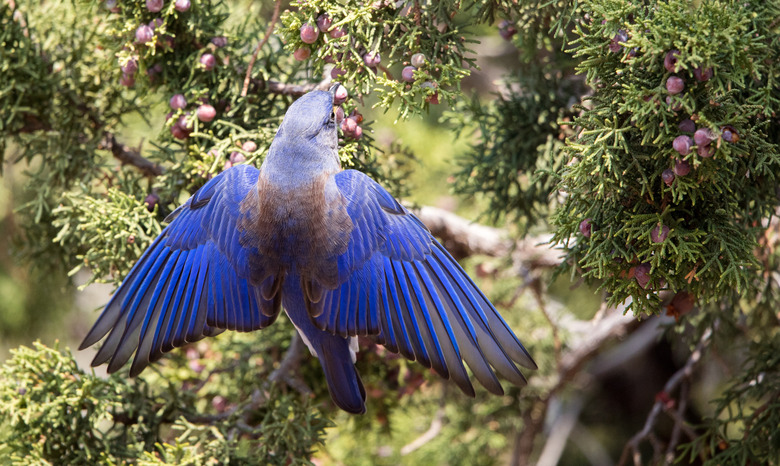Where To Place Bluebird Houses
Urban sprawl, modern construction materials and high competition among birds makes it difficult for bluebirds to find safe nesting sites. Bluebirds are cavity-nesting birds that live in trees, fences and downed vegetation. They cannot make the cavities, so they nest in areas that other creatures have made and abandoned, such as a barn owl house. Bluebirds compete with sparrows and wrens for cavities, and risk snakes, raccoons, cats and other predators finding their nests. However, a properly placed bluebird house can provide the birds with a safer alternative and provide you with months of entertainment.
Blue Bird House Location
Bluebird houses should be in rural areas or on the fringe of the suburbs. While bluebirds have been spotted in cities, they rarely nest there. The best places for bluebird houses are open areas scattered with a few trees or near the edge of a forest . Some underbrush is useful for drawing out the insects the bluebirds eat, but too much underbrush covers the insects too well. The North American Bluebird Society suggests pastures, low-traffic parks and "mowed areas such as cemeteries and golf courses." All areas should be free of pesticides and herbicides.
Avoiding Other Birds
A bluebird house should not be placed near houses, barns or dilapidated buildings, because these are the territories of house sparrows. Sparrows are larger than bluebirds and make nests earlier, so they will outcompete the bluebirds for the houses. In suitable areas with a large sparrow presence, two houses can be placed at least 25 feet apart, because the sparrows will use one and leave the other alone. Bluebird houses also should not face bushes or large amounts of brush, because wrens will take advantage of these houses. Bluebird houses should be spaced at least 100 yards apart so that mating pairs can maintain their territories without stress.
High Enough to Avoid Predators
Bluebird houses should be mounted 4 to 6 feet above the ground. They should be on a metal or wooden post with at least one predator guard to keep creatures from climbing up to the nest. You may also grease the post, if desired. Fence posts are an option, but raccoons tend to traverse fences, so it is not the safest option. Mounting on trees and telephone poles is also permissible, but climbing predators such as cats are more likely to get into these houses.
Orientation Is Important
The most important rule for orienting bluebird houses is to make sure the residents can see a perch nearby. The fledglings will likely head to this perch during their first flight. If possible, the opening should not face the rain and prevailing wind. While a bluebird house should be in sunny location, the opening should not receive too much direct sunlight, if possible. Facing east is usually good for the amount of sunlight desired.
Cite This Article
MLA
Hippler, Megan. "Where To Place Bluebird Houses" sciencing.com, https://www.sciencing.com/place-bluebird-houses-8046029/. 22 November 2019.
APA
Hippler, Megan. (2019, November 22). Where To Place Bluebird Houses. sciencing.com. Retrieved from https://www.sciencing.com/place-bluebird-houses-8046029/
Chicago
Hippler, Megan. Where To Place Bluebird Houses last modified March 24, 2022. https://www.sciencing.com/place-bluebird-houses-8046029/
